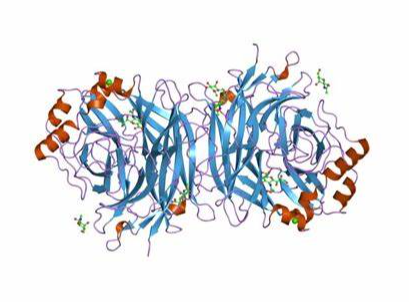Key features and details | |
Cat. No. | MABL-1770 |
Name | Anti-HA cleavage site mAbs |
Clone No. | AFD- A3 |
From | Recombinant Antibody |
Isotype | Engineer antibody |
Application | SPR, ELISA, IF |
Species Reactivity | Influenza A (H5N1) |
Basic Information | |
Specificity | The antibody specifically recognizes the sequence (NS)PQRER observed at the cleavage site of the hemagglutinin protein of the H5N1 avian influenza virus. The antibody does not cross-react with the HA protein of H1N1 or H7N7 strain. |
Alternative Name | Hemagglutinin Cleavage Site; CS HA; Avian Influenza Virus; H5N1 |
UniProt | A5A5M5 |
Immunogen | The original antibody was generated by immunizing mice with the cleavage site (CS) peptide of hemagglutinin protein, followed by antibody library construction and phage display-based selection. |
Application Notes | The specificity of this antibody (Fab) was confirmed by ELISA. The epitope mapping of this antibody was done using ELISA. The binding affinity of the Fab fragment towards the cleavage site peptide of HA derived from the HPAI H5N1 virus was found to be Kd= 0,80 nM using surface plasmon resonance. The clone was used for detection of the cleavage site peptide on an open sandwich ELISA, reaching the lower limit of detection (LOD) in the range of 1 to 10 ng/ml. This antibody was also used in the immunofluorescent staining of Madin-Darby canine kidney cells infected with HPAI H5N1 (Dong et al, 2013; pmid:23577205). |
Antibody First Published | Dong et al. Isolation of recombinant phage antibodies targeting the hemagglutinin cleavage site of highly pathogenic avian influenza virus PLoS One. 2013;8(4):e61158. PMID:23577205 |
Note on publication | The paper describes the generation and characterization of the antibody. |
COA Information (For reference only, actual COA shall prevail) | |
Size | 100 μg Purified antibody. |
Concentration | 1 mg/ml. |
Purification | Protein A affinity purified |
Buffer | PBS with 0.02% Proclin 300. |
Concentration | 1 mg/ml. |
Storage Recommendation | Store at 4⁰C for up to 3 months. For longer storage, aliquot and store at - 20⁰C. |



